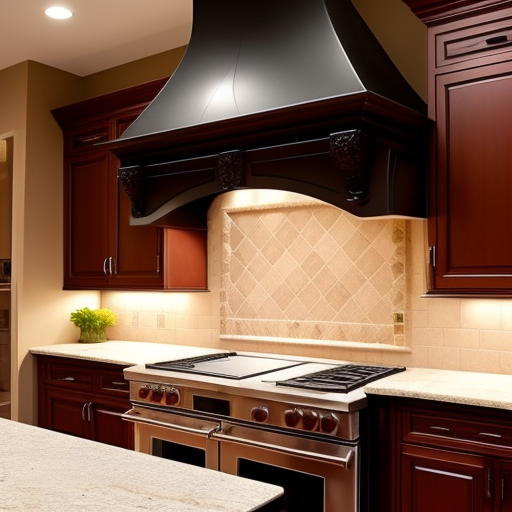The materials that are utilized in stone cast hoods offer multiple advantages over natural stone, such as granite or marble. For instance, cast stone hoods are considerably lighter in weight, which makes them simpler to install, and also reduces the risk of damaging surrounding walls or cabinetry. Moreover, they are more economical than natural stone, as the casting process is less expensive than quarrying and cutting natural stone.
The specific components used in the production of stone cast hoods may vary depending on the manufacturer, but generally consist of a combination of the following:

Cement binder: Portland cement or another type of cement binder is incorporated into the mixture to bind the aggregates together and confer durability and strength to the finished product.
Water: Water is added to the blend to activate the cement binder and produce a moldable mixture that can be cast into the desired shape.
Pigments: Pigments may be added to the mixture to attain a specific color or hue for the finished product. This enables stone cast hoods to be tailored to the existing color scheme of a kitchen and offers a range of customization options.
Reinforcement materials: Depending on the size and design of the hood, supplementary reinforcement materials may be included in the blend to furnish additional strength and stability. Examples of these materials include wire mesh or fiberglass strands.
Once the blend has been poured into the mold, it is left to cure and harden for several days. After the casting process is complete, the stone cast hood can be finished with a variety of treatments, such as sandblasting, acid etching, or polishing, to achieve the desired texture and finish. The outcome is a robust, lightweight, and cost-effective range hood that boasts the appearance and texture of natural stone. Cast stone hoods are a type of custom kitchen range hood. Custom range hoods are designed and built to fit the specific needs and style preferences of the homeowner, as opposed to prefabricated range hoods that are mass-produced and available in limited designs and sizes. Cast stone hoods are a popular choice for custom range hoods because they can be molded and finished in a wide range of styles, colors, and textures to match the existing kitchen design.
Because cast stone hoods are made from a composite material, they are more versatile than natural stone hoods in terms of customization options. They can be cast in a variety of shapes and sizes, from simple rectangular designs to ornate and highly detailed hoods with intricate carvings and moldings. The addition of pigments to the mixture also allows for a wide range of color options, making it easier to match the hood to the existing color scheme of the kitchen.
Custom range hoods, including cast stone hoods, are often the centerpiece of the kitchen design and can add a significant amount of visual interest and style to the space. They can also be designed to accommodate specific cooking needs, such as incorporating a built-in ventilation system or additional lighting. Custom range hoods can be more expensive than prefabricated hoods, but the added customization and design options often make them a worthwhile investment for homeowners who want a truly unique and personalized kitchen design.
